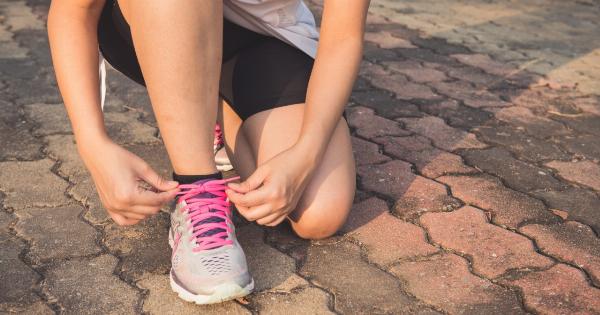Aging is a natural process that affects every living organism, and humans are no exception.
While aging can be influenced by various factors such as genetics, lifestyle choices, and environmental factors, there is one particular component that often goes unnoticed – shoelaces. Yes, you read that correctly. Shoelaces can actually play a hidden role in the aging process, and it is worth exploring how they impact our well-being as we grow older.
The Importance of Proper Footwear
Before diving into the specific role of shoelaces, it is essential to understand the significance of proper footwear in relation to aging. As we age, our feet undergo changes, such as the natural loss of fat padding and decreased elasticity in the skin.
These changes can lead to various foot problems, including pain, instability, and difficulty walking. Wearing appropriate footwear is crucial in maintaining foot health and preventing such issues.
Shoelaces and Foot Support
Shoelaces are commonly used to secure footwear, but their role extends beyond simple convenience. Tying shoelaces tightly can provide additional support to the foot, helping to enhance stability and reduce strain on the muscles and ligaments.
This is especially important for aging individuals who may already experience decreased strength and stability in their lower limbs. By properly securing shoes with shoelaces, one can minimize the risk of falls and injuries, promoting better overall health and mobility.
Shoelaces and Foot Circulation
Another aspect of aging that is often overlooked is the decline in foot circulation. Reduced blood flow to the feet can lead to various issues, including decreased tissue oxygenation and slower wound healing.
Surprisingly, one of the contributing factors to poor foot circulation can be tight or improperly tied shoelaces. When shoelaces are excessively tight, they can restrict blood circulation by compressing the blood vessels in the foot. This potentially harmful effect can be mitigated by using appropriate shoelace techniques and ensuring a comfortable fit.
The Role of Shoelaces in Foot Pain
Foot pain is a common complaint among older adults, which can greatly affect their quality of life.
Ill-fitting shoes or improperly tightened shoelaces can exacerbate foot pain by placing undue pressure on sensitive areas, such as bunions, corns, or calluses. Shoelaces that are too tight can also contribute to the development of conditions like ingrown toenails or plantar fasciitis.
It is crucial to strike a balance between proper foot support and avoiding excessive pressure when tying shoelaces for aging individuals.
Choosing the Right Shoelaces
When it comes to shoelaces, it is not just the act of tying them that matters but also the material and design of the laces themselves.
Elastic or stretchable shoelaces can be beneficial for those with arthritis or limited dexterity, as they provide a secure fit without requiring complicated knotting. Additionally, flat or wide laces can distribute pressure more evenly on the foot, reducing discomfort or irritation.
Shoelaces and Falls Prevention
Falls are a significant concern for older adults, as they can lead to serious injuries, decreased independence, and even mortality. Shoelaces, if not properly managed, can contribute to the risk of falls by causing tripping hazards.
Loose or untied shoelaces can get caught on objects or within the shoes themselves, resulting in sudden loss of balance. Regularly checking and maintaining shoelaces can help prevent such accidents, ensuring safety and well-being.
Adapting Shoelaces for Aging Individuals
As people age, certain tasks can become more challenging due to physical limitations. Tying shoelaces is one such task that may require adaptations for older adults who have difficulty bending or manipulating their fingers.
Various alternative solutions are available, such as no-tie shoelaces, elastic laces, or Velcro straps. These modifications can simplify the process of securing footwear while still ensuring a snug fit and adequate foot support.
Regular Shoe Inspections
Maintaining the condition of shoes and their associated shoelaces is crucial for individuals of all ages, but even more so for older adults.
Regularly inspecting the shoelaces for signs of fraying, wear, or damage can help detect potential hazards before they lead to accidents or discomfort. Replacing worn-out shoelaces is a simple yet effective measure in ensuring continued foot health as we age.
Conclusion
Although the impact of shoelaces on aging may seem surprising at first, it becomes apparent that these seemingly small details can make a significant difference in foot health, stability, and general well-being.
From providing essential support and circulation to minimizing foot pain and preventing falls, properly managed shoelaces should not be overlooked as a hidden factor in the aging process. By understanding the role of shoelaces and making appropriate choices regarding footwear, individuals can age gracefully, maintaining optimal foot health and mobility for longer periods.






























